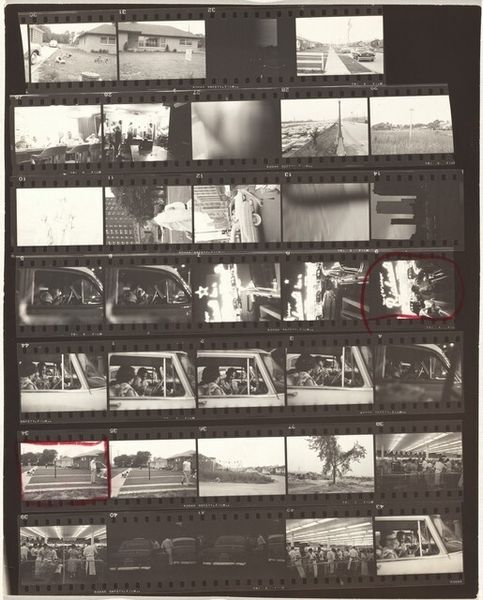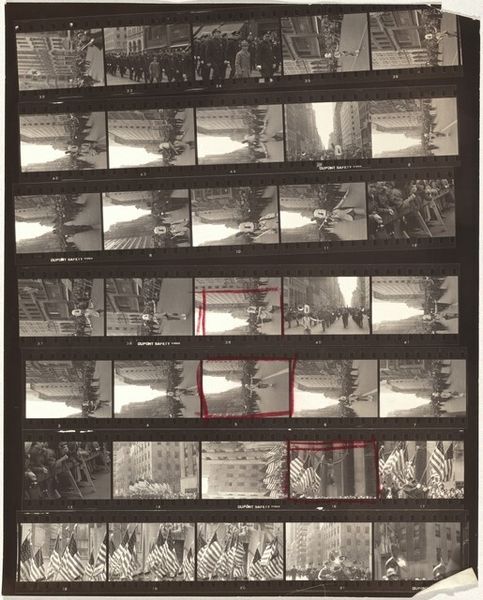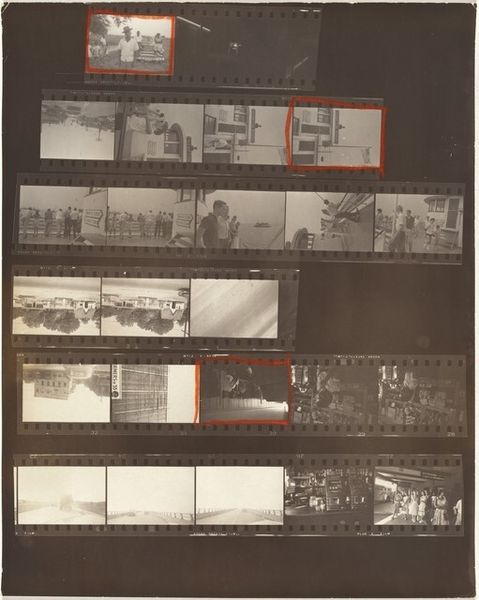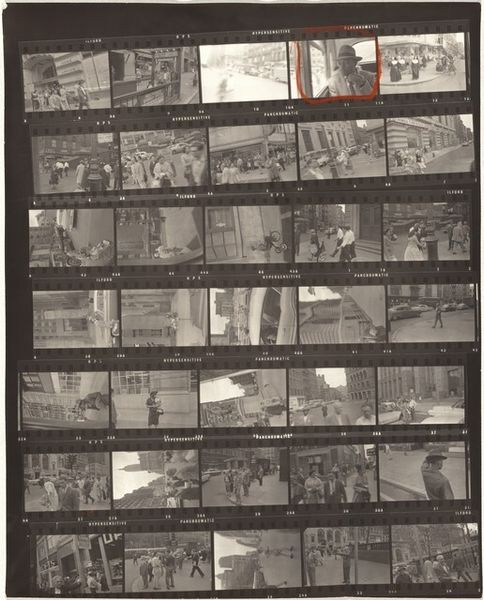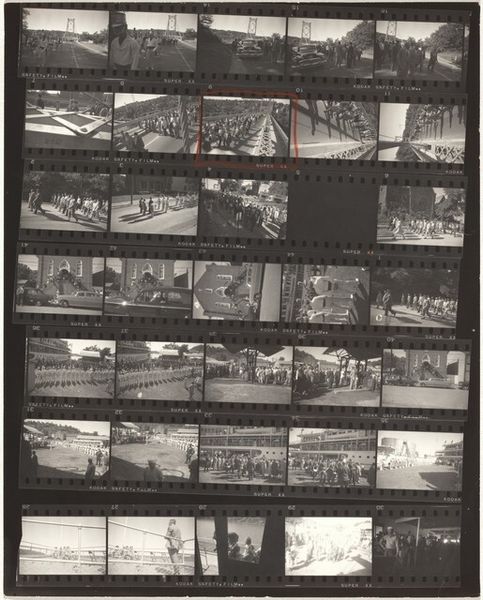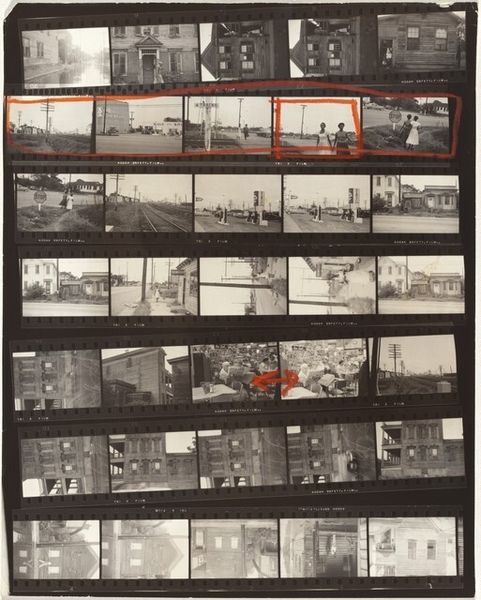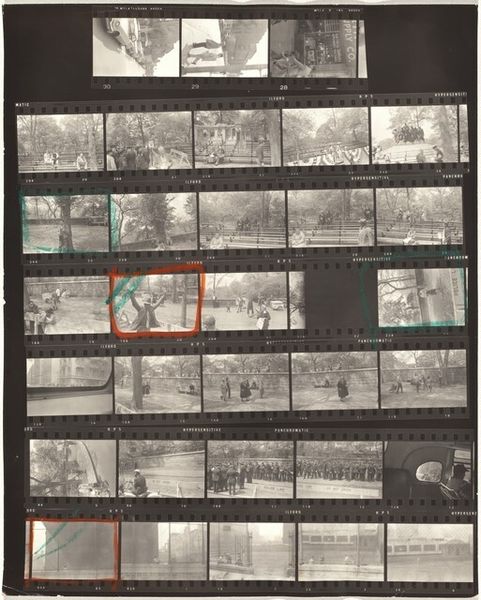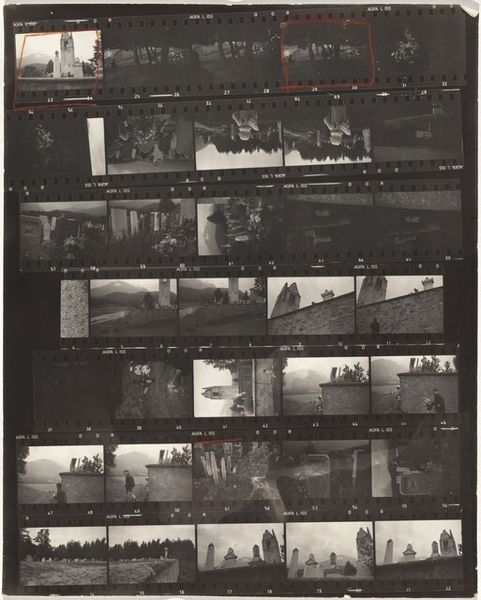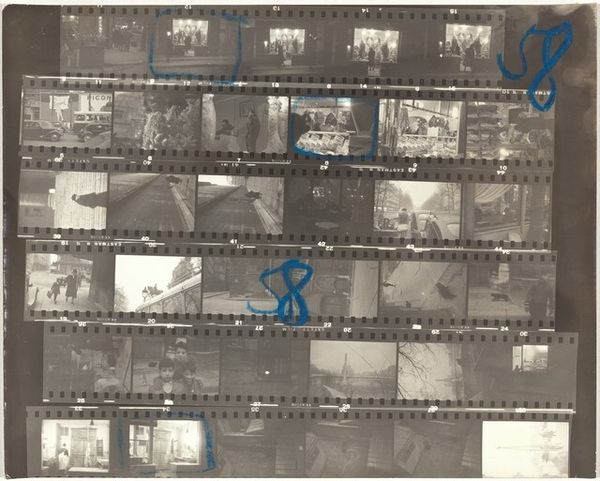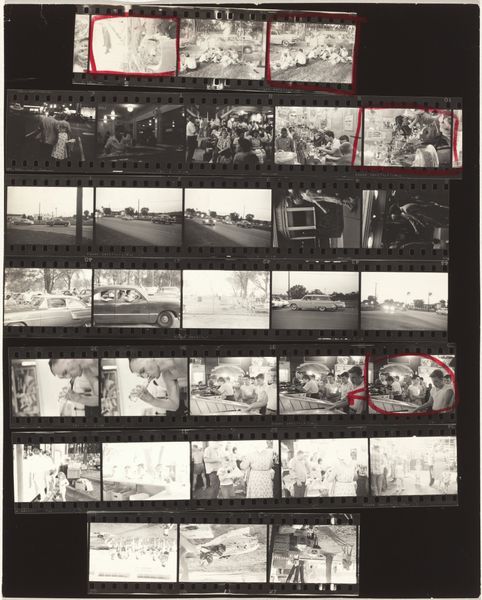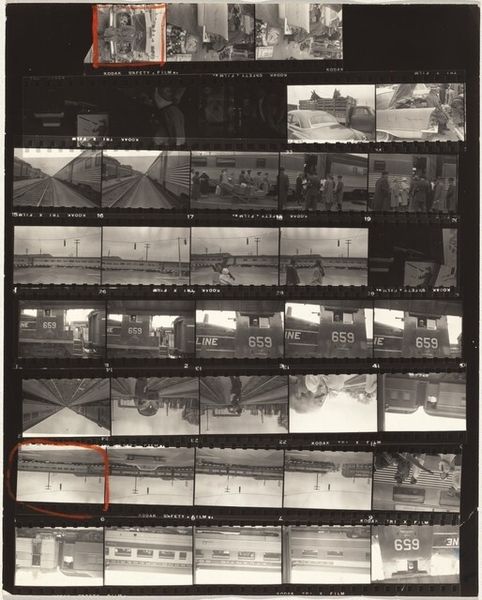
photography, gelatin-silver-print
#
film photography
#
street-photography
#
photography
#
gelatin-silver-print
#
cityscape
#
modernism
#
realism
Dimensions: sheet: 25.2 x 20.1 cm (9 15/16 x 7 15/16 in.)
Copyright: National Gallery of Art: CC0 1.0
Curator: Robert Frank's "New York City no number," a gelatin silver print from 1955, captures the raw energy of the city. What's your first impression? Editor: There's an immediate rawness in the way the images are presented, like a contact sheet, not intended for public consumption. You feel like you're getting an intimate look behind the scenes, a window into the photographic process itself. Curator: Indeed, presenting a full film strip with evidence of the artist’s editing provides a distinct layer to our reading of his work. This layout prompts us to consider the significance of image selection and how photography holds immense social and cultural power to reflect societal concerns. Editor: I see a challenge to traditional notions of photographic "finish" too. By revealing the working process, Frank emphasizes the materiality of film—the sprockets, the grain—and highlights photography as an industrial process rooted in specific materials and labor. Curator: Absolutely. These fleeting shots, seemingly caught in transit, present a new mode of visual understanding by moving away from posed studio settings and deliberately embracing a more candid aesthetic aligned with a changing postwar society. Editor: The selection of subjects too! Fragments of urban life...legs walking, detritus on a road...almost like a scavenger finding beauty in the mundane castoffs. This echoes post-war consumption as material objects themselves become photographic subject matter. Curator: And this choice of subject matter helped define Frank’s perspective which critiqued the conventional portrait of American life by representing the alienation and unease underneath the surface of 1950s optimism. Editor: It makes me think about the darkroom. Consider the labor involved: developing chemicals, exposure times. A darkroom is also where an artist decides which pictures count. What’s deemed ‘worthy’. Curator: Presenting the film strip transforms our relationship with the artist’s selection process, opening possibilities for broader perspectives. Editor: Exactly. A powerful reminder that every artistic image is always also tied to specific social contexts, artistic labour, and very specific tangible materials. Curator: Indeed, viewing art such as this gives rise to new vantage points beyond simple aesthetic pleasures to create a window onto complex social constructs. Editor: For me, it exposes the bones, guts, the actual working process and materiality of crafting iconic photographic moments. It pulls away a romanticized interpretation, showing its grit.
Comments
No comments
Be the first to comment and join the conversation on the ultimate creative platform.
